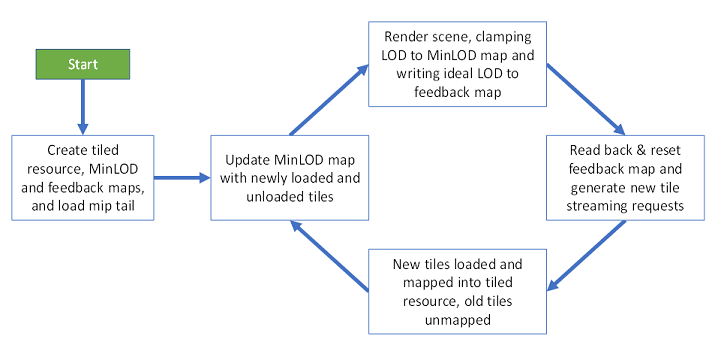One does math based on visible geometry and textures attached to it to figure out what is needed. Based on the size of the rendered geometry the right mip levels can be fetched. There also is going to be a cache so it's ok. to fetch a little bit too much speculatively. One will also make some heuristics based on the motion and rotation of objects to decide which tiles to fetch/not fetch.
Something like meshlets could be tremendously useful on figuring this stuff out/optimizing it when sfs is not available/desired to be used. Meshlets would likely make things easier as where appropriate we can work on meshlet level for streaming/discarding/rendering versus caring about individual triangles.
Transcript from the video I pasted
“No matter how you manage texture residency, whether it's full mip chain, or partial mip chain, you have some decisions to make about what to load, and when. Like, when do you load that 4k mip0?
Well, maybe something tried to sample from it. Well, how would you know that? Because samplers are opaque, you don't have a built-in way of knowing.
You can try to calculate mip level selection yourself. Maybe, you can be really clever. Maybe, you can emulate the filter mode of the sampler that you're using in your shader. Maybe, you can try to be really precise about emulating it, but it's really, really hard.
And, if you're using tiled resources, it's even harder, because it not enough just to know what mip level you're going to end up with. You need to know where on that mip level. So, if you combine that with use of, like, anisotropic filtering or something, trying to emulate that choice of where you sample from and all the site of places that it could have sampled from, it's prohibitively hard. It's just deal-breakingly hard.
So, enter sampler feedback. Sampler feedback is a way of opening up that black box, so you can find out what mips you tried to sample from and it goes a step further than that. It will tell you what parts of those mips. So, one thing to note is that sampler feedback is not a complete overhaul of sampling hardware, but it's an extension to it. It's a GPU hardware feature that extends existing hardware designs, and gets you something new out of what used to be that closed black box.”


